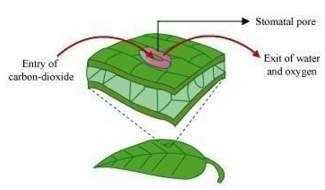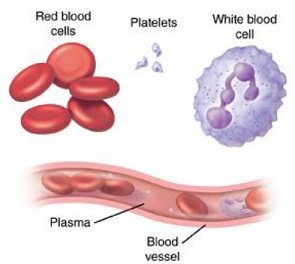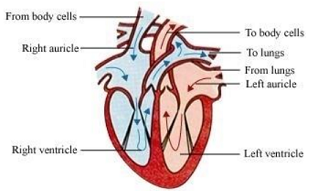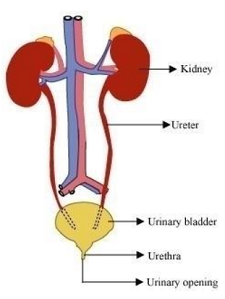
NCERT Solutions for Class 7 Science Chapter 11
NCERT Solutions for Class 7 Science Chapter 11: This page consist of details solution of chapter Transportation in Plants and Animals class 7 science . You can check NCERT Solutions for class 7 Science for other chapters of class 7 science prepared by Physics Wallah. do the questions by yourself and check your solution with Physics Wallah NCERT solution for the chapter Transportation in Plants and Animals. to have more depth in chapter Transportation in Plants and Animals class 7 science you must read the theory of Transportation in Plants and Animals and do the additional question of Physics Wallah click this link to do the questions and read theory of Transportation in Plants and Animals. along with NCERT Solutions of class 7 science
NCERT Solutions for Class 7 Science Chapter 11 Overview
Developing a solid understanding of each chapter is crucial for students. Chapter 11 of NCERT Solutions for Class 7 Science covers significant topics. To fully comprehend the concepts presented in this chapter and effectively utilize the provided solutions, it’s recommended that students meticulously study each topic. Physics Wallah’s instructors have specifically created these solutions to aid in understanding the concepts within this chapter. The goal is to equip students to confidently tackle tests after reviewing and practicing these solutions.NCERT Solutions for class 7 Science Chapter 11 Transportation in Animals and Plants
While solving science specifically for class 7 you need lots of resource to excel in class 7 science to give you edge Physics Wallah uploaded additional questions of class 7 science for solid foundation of class 7 science , Academic team of Physics Wallah uploaded detail theory of class 7 science with added additional Notes & Questions.
| CBSE Syllabus Class 7 | |
| CBSE Class 7 English Syllabus | CBSE Class 7 Math Syllabus |
| CBSE Class 7 Social Science Syllabus | CBSE Class 7 Science Syllabus |
NCERT Solutions for Class 7 Science Chapter 11 Exercise 1
Question 1: Match structures given in Column I with functions given in Column II.
| Column I | Column II | ||
| (i) | Stomata | (b) | Transpiration |
| (ii) | Xylem | (d) | Transport of water |
| (iii) | Root hairs | (a) | Absorption of water |
| (iv) | Phloem | (c) | Transport of food |
Question 2: Fill in the blanks.
(i) The blood from the heart is transported to all parts of the body by the______.
(ii) Haemoglobin is present in ______ cells.
(iii) Arteries and veins are joined by a network of ______.
(iv) The rhythmic expansion and contraction of the heart is called ___ _ _.
(v) The main excretory product in human beings is ______.
(vi) Sweat contains water and ______.
(vii) Kidneys eliminate the waste materials in the liquid form called ______.
(viii) Water reaches great heights in the trees because of suction pull caused by ______.
Answer:
(i) The blood from the heart is transported to all parts of the body by the arteries .
(ii) Haemoglobin is present in red blood cells.
(iii) Arteries and veins are joined by a network of capillaries .
(iv) The rhythmic expansion and contraction of the heart is called heart beat .
(v) The main excretory product in human beings is urea .
(vi) Sweat contains water and salts .
(vii) Kidneys eliminate the waste materials in the liquid form called urine .
(viii) Water reaches great heights in the trees because of suction pull caused by transpiration .
Question 3: Choose the correct option:
(a) In plants, water is transported through
(i) xylem
(ii) phloem
(iii) stomata
(iv) root hair
(b) Water absorption through roots can be increased by keeping the plants
(i) in the shade
(ii) in dim light
(iii) under the fan
(iv) covered with a polythene bag
Answer:
(a) (i) xylem
(b) (iii) under the fan
Question 4: Why is transport of materials necessary in a plant or in an animal? Explain.
Answer: Transport of materials is necessary in both plants and animals as every cell needs a regular supply of nutrients and oxygen for releasing energy through respiration. The food that we eat is broken down into smaller components to be absorbed by the cells. The oxygen that we inhale is also transported to all the cells of the body. Our body also requires a constant removal of waste materials such as carbon dioxide. For the transport of all these materials (food, oxygen, and wastes), our body has a specialised transport system. Similarly, in plants, the transport of water and food is accomplished with the help of a complex transport system.
Question 5: What will happen if there are no platelets in the blood?
Answer: If there are no platelets in the blood, then the blood would not be able to clot. A clot is formed because of platelets. They release blood clotting chemicals at the site of injury. These chemicals form a clot and prevent further bleeding.
Question 6: What are stomata? Give two functions of stomata.
Answer:
Stomata are tiny pores present on the surface of a leaf.
Functions of stomata:
(a) Stomata help in the exchange of gases.
(b) Evaporation of water from the leaf surface occurs through stomata.

Functions of stomata
Question 7: Does transpiration serve any useful function in the plants? Explain.
Answer: Transpiration is the evaporation of water from the plants. The water evaporates through the stomata present on the surface of the leaves. Transpiration is mainly responsible for the loss of water that was absorbed by the plants. However, it is important for plants as it helps in the movement of water to the top of tall trees. As a result, it helps in the distribution of water throughout the plant body. It also helps in cooling the plant.
Question 8: What are the components of blood?
Answer: The main components of blood are

(i) Red blood cells (RBCs): Red blood cells are the most abundant cells in the blood. These cells contain a red pigment called haemoglobin. It is the haemoglobin which carries oxygen and transports it to all parts of the body.
(ii) White blood cells (WBCs): WBCs are colourless cells without haemoglobin. They fight against infections and protect the body from foreign particles such as germs and bacteria.
(iii) Platelets: Platelets are the smallest cells in the blood. The main function of platelet is to prevent bleeding.
Question 9: Why is blood needed by all the parts of a body?
Answer: Blood is needed by all parts of the body as it is an important part of the transport system of our body. It performs the following important functions:
(i) It transports O2 from the lungs to all the body cells.
(ii) It carries CO2, a waste product back to the lungs so that it can be exhaled easily.
(iii) It transmits heat, thus regulating the body temperature.
(iv) It also fights off diseases and infections.
Question 10: What makes the blood look red?
Answer: The presence of haemoglobin, a red pigment in the red blood cells (RBCs) makes blood appear red in colour. The haemoglobin carries oxygen and transports it to all the parts of the body.
Question 11: Describe the function of the heart.
Answer: The human heart is divided into four chambers. The upper two chambers are called right and left atrium and the lower two chambers are called the right and left ventricles. Right atrium receives carbon dioxide-rich blood from the body. Blood from right atrium enters the right ventricle, which contracts and pumps the blood to the lungs.

Flow of blood in the human heart
On the other hand, oxygen rich blood from the lungs returns to the left atrium. From the left atrium, blood enters left ventricle. Left ventricle contracts and pumps the blood to all parts of the body. Hence, the rhythmic contraction and expansion of various chambers of the heart maintains the transport of oxygen to all parts of the body.
Question 12: Why is it necessary to excrete waste products?
Answer: All cells of our body produce waste products. These waste products are toxic to the body and therefore need to be excreted out. This process of removing waste products produced in the cells of living organisms is called excretion.
Question 13: Draw a diagram of the human excretory system and label the various parts.
Answer:

Human excretory system
NCERT Solutions for Class 7 Science Chapter 11 FAQs
What is the circulatory system in animals?
How does transportation occur in plants?
What are the components of blood and their functions?
How does the heart function in the circulatory system?
What is transpiration in plants?








